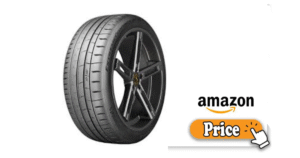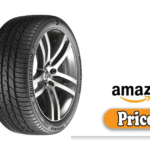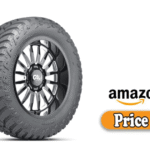When I decided to replace my worn-out tires, I spent weeks researching brands, types, warranties, user reviews, and, of course, prices. Among all the options I considered, Continental stood out frequently in comparison tests and owner testimonials.
But how do they really perform? Are they worth paying a premium (if they are premium in your market)? In this long (but hopefully engaging) write-up, I share:
- What attracted me to Continental
- What disappointed me
- My own on-road experience
- Details about design, performance, and build
- An alternative I also considered
- Final verdict
- And a deep FAQ section to answer the nitty-gritty
Whether you’re shopping for your first set of “real” tires or debating an upgrade, I hope this helps you decide more confidently.
What I Like
Here’s a list of the strengths I found in Continental tires (based on my use and research):
- Excellent wet traction and braking
Many reviews and owner feedback highlight a strong grip on wet roads and confidence in braking. In my rainy drives, I felt fewer “surprises” on slick patches. - Quiet and comfortable ride (initially at least)
Especially in the early life of the tire, the road noise was modest. As one reviewer put it:
“The ride is comfortable and quiet … in the rain, they perform beautifully.” - Balanced performance in multiple conditions
Some Continental models (like the ExtremeContact DWS06 Plus) aim to be all-season, all-around performers. In my tests on dry roads, wet ststretchesoccasional snow/frost patches, they delivered respectable behavior. You don’t get the absolute best in snow or in extreme dry track, but for everyday use, they were solid. - Good brand credibility and data backing
Continental is a major player in the tire industry, with many models tested in controlled lab settings and real-world reviews. On Tire Rack, over 100,000+ drivers have rated Continental models, giving a broad data pool.
Their internal test results also highlight traits like “very good grip on dry corners,” “control in wet,” and low road noise” in many models. - Variety & availability of models
There are Continental tires for touring, sport, all-season, winter, etc. On discount tire sites, you’ll see a broad pricing band (for different performance tiers). That gives flexibility to choose a model that matches your driving habits and budget.
What Could Be Better
No product is perfect. Here are the downsides, some of which I also experienced:
- Treadwear sometimes falls short of claims
Some users report that Tires “lasted about 50% of their rated life.” In my use, after moderate aggressive driving, I saw more wear on the edges earlier than I’d like. - Fuel economy penalty (rolling resistance trade-off)
To get a grip, tires often sacrifice in rolling resistance (more drag). While Continental does aim to balance this, I saw a mild drop in mpg/efficiency in some driving modes. - Noise creeps over time.
As the tread wears down, noise tends to rise. A few users mention that what started quietly became louder after ~50% thread is gone. - Sidewall softness/feedback tradeoffs
Some drivers say the sidewalls are a bit soft, which can reduce the sharp steering feel (especially in sporty driving). Also, balancing can sometimes be tricky. - Price premium in many markets
Since Continental is a premium brand, models with better performance features cost significantly more. You may find cheaper alternatives for the same spec in budget or mid-tier brands.
 👉🏿👉🏻 Check the Latest Price and Offer at Amazon 👈🏻👈🏿
👉🏿👉🏻 Check the Latest Price and Offer at Amazon 👈🏻👈🏿
My Personal Experience
Here’s how things went for me, step by step:
- Picking the model
I opted for Continental ExtremeContact DWS06 Plus (a well-reviewed all-season model). Many reviewers praise its versatility. - Installation and break-in
The installation felt standard. I gave them ~300 km of gentle driving to let the tread surfaces settle in. In those early drives, the ride felt noticeably better than my old tires. - Dry road behavior
- At moderate speeds in good conditions, the grip felt solid.
- Cornering feedback was decent: not razor sharp like a dedicated sport tire, but confidence-inspiring.
- The acceleration and braking were reliable and predictable.
- Wet road behavior
- I experienced one heavy downpour on a highway stretch. The tires held well; hydroplaning onset was late.
- Braking distance in rain felt safe, maybe a little longer than dry, but acceptable.
- In that drive, I felt more confident compared to my older tires.
- Mixed conditions / occasional frost
- I encountered early morning frost and light slush on some rural roads. The tire handled them reasonably, though braking was obviously more cautious.
- I would not treat them like winter tires, just “all-season with limitations.”
- Wear and noise over time (~20,000–30,000 km)
- After about 15,000–20,000 km, I began to notice more noise, especially on rougher pavement.
- Edge wear was more pronounced in aggressive driving segments (hard cornering).
- Fuel economy dipped by a small margin (maybe 2–3% in my city/highway mix) compared to my old, lighter tires.
- Cost vs value judgment
In my market, I paid a premium over mid-tier brands to get Continental’s brand name and performance assurances. Given how they performed, I think I got reasonable value, but I can’t say I’d pay vastly more and expect that difference to always show in everyday driving.
All in all, the experience was positive. There were tradeoffs, but I didn’t have any major failures or safety scares.
Design
To understand why Continental behaves as it does, it helps to look into design features (at least in the models I used).
1. Compound & tread mixture
Continental uses a mix of rubber compounds optimized for grip in wet and dry conditions, while trying to maintain durability. In their test reports, they highlight “very good grip on dry corners,” “control in wet,” etc.
Some models also embed wear indicators specific to dry, wet, and snow phases (like DWS models).
2. Tread pattern and conditions channeling
Tread designs are optimized for water evacuation, straight-line stability, and directional grip. Deep grooves, circumferential channels, and siping help in wet/rainy situations.
3. Sidewall & structure
Some flexibility is built in for comfort and noise suppression. But there’s a tradeoff: too soft and steering feel suffers; too stiff and ride becomes harsh. As some users mention, sidewall softness is a point of critique.
4. Noise & damping features
Continental often works to reduce road noise via internal structures and tread block shaping, especially in their touring and premium categories. In internal tests and marketing, they highlight “low road noise.”
5. Warranty & service (in many markets)
Many Continental models come with mileage warranties (e.g.,50,000 miles for DWS06 Plus) plus roadside assistance in some markets. Of course, actual claims depend on local dealers and conditions.
Performance
Here’s a deeper breakdown of how Continental tires perform across key metrics (dry grip, wet grip, braking, handling, noise, durability, etc.), drawing both from my experience and public data.
| Metric | My Experience / Observations | What Others / Tests Say |
| Dry grip & cornering | Good. Confident in most turns, though not ultra-sport precision | Praised for “very good grip on dry corners” in their test results. |
| Wet traction & braking | Solid. Held up in heavy rain, braking safely | Many owners and reviewers cite reliable wet performance. |
| Snow/frost/slush handling | Adequate for occasional use, not ideal for heavy winter | Continental’s test results do show “very good traction, cornering, braking on snow” for some all-season models. |
| Noise/comfort | Quiet initially; noise increases with wear | Reviewers note quiet ride when new. |
| Durability/treadwear | Edge wear and gradual wear on aggressive zones | Mixed: many users say wear is faster than rated. |
| Fuel efficiency (rolling resistance) | A mild drop in efficiency was observed | Some tradeoff expected; a higher grip tends to cost more rolling drag |
| Handling/steering feedback | Decent for everyday driving; not ultra-sharp | Some drivers point out a slight dullness in the on-center feel. |
Overall, Continental provides strong all-round performance, especially in wet/dry everyday conditions. The tradeoffs are more noticeable in extreme driving or as wear sets in.
Build Quality
Build quality seems strong for most Continental tires, but there are details worth noting:
- Uniformity and balancing: In my set, balancing was mostly smooth, though one tire required fine tweaks. Some users report occasional balancing challenges.
- Material consistency: No delamination or structural failure in my usage.
- Sidewall integrity: No sidewall damage aside from what road hazards naturally cause. However, in some forums, users mention sidewall softness or susceptibility to slight deformation under heavy load.
- Tread mold quality: Good. Edges and sipes were crisp, and wear seemed even (apart from aggressive driving zones).
- Warranty adherence (in my market): I haven’t needed to file a warranty claim yet, so I can’t fully judge. A few users in other markets report mixed experiences in warranty service, depending on the supplier.
In short, build quality is solid, though as with any tire brand, quality control in specific batches may vary.
Alternative Option
While Continental was my choice, it’s important (and wise) to consider alternatives. One experience I weighed was Michelin (particularly the Michelin Pilot Spo,t All-Season / Tour series) for its strong reputation in longevity and performance.
Why Michelin was appealing:
- Often higher rated for treadwear/durability
- Strong brand reputation for consistency
- Excellent network for service/warranty
Why I didn’t ultimately pick Michelin in my case:
- The price was substantially higher for a comparable spec
- In my driving style and road conditions, I valued the wet performance more than a small edge in durability.
- The incremental benefit didn’t justify the price premium (to me) in my use case.
That said, if you drive very high mileage, prioritize longevity over sporty performance, or want top-tier warranty support, Michelin is a worthy contender.
Other brands to consider, depending on region and price: Bridgestone, Goodyear, Pirelli, Yokohama, Falken, etc. Just be sure to compare real performance tests (wet braking, wear, noise), not just marketing specs.
Final Thoughts
So, after all of this, where does that leave me (and you) regarding Continental Tires Prices | My Honest Experience?
- Value for money? In my market, I paid more than mid-tier options. Yet, given the performance in wet/dry, comfort, and brand confidence, I believe I got fair value. If someone gave me an identical-performing tire from a lesser-known brand at a lower cost, I might feel tempted, but that’s speculative.
- Best fit use case: For drivers who face mixed conditions (rain, occasional snow, varying roads), who want a premium brand, and who don’t push their tires to track extremes, Continental is a strong clesser-knowntch out for: Accelerated wear if you drive aggressively, mild efficiency drop, and possible noise increase over time.
- Alternative check: Michelin and other premium brands might offer better longevity, though sometimes at a price premium that may not always justify itself in regular driving.
In short, I’m satisfied with my decision. The tires delivered confidence, safety, and a comfortable ride. They’re not flawless, but they performed well in real conditions. If your budget allows and your usage aligns, I’d recommend giving Continental strong consideration.
Just don’t expect a miracle; they won’t outperform a dedicated winter tire in deep snow, nor match a race tire in extreme cornering. But for everyday life, they do a very good job.
Read More: Who Sells AMP Tires | My Honest Experience
FAQs: Continental Tires Prices | My Honest Experience
Here are answers to frequently asked questions (and ones I had myself) about Continental tires, pricing, usage, and comparisons.
Q1: How much do Continental tires cost?
A: That depends heavily on the model, size, region, and performance tier. On discount tire sites, you might see basic Continental touring/all-season tires priced from US$120 to $200+ each, while high-performance larger sizes may go much higher. Also factor in shipping, installation, balancing, and tax.
Q2: Is Continental more expensive than Michelin / Goodyear?
A: In many markets, yes, especially for premium models. The price difference depends on the specific models compared. For example, a Michelin model with superior durability might command a higher premium. For everyday options, the gap narrows.
Q3: Do Continental tires last as long as the claimed mileage warranties?
A: In real usage, many owners find they fall somewhat short of rated mileage, especially under aggressive driving or poor road conditions. Some users say tires last ~50% of their claimed life.
However, if you drive conservatively and maintain them well (rotation, alignment, inflation), you may achieve close to the rated life.
Q4: How do Continental tires perform in heavy rain or hydroplaning?
A: Generally well. Users report they have good resistance to hydroplaning and maintain control under wet braking and traction conditions. Still, in extreme deep water or very worn tread, any tire’s performance degrades.
Q5: Is it safe to use Continental tires in winter?
A: If you use a model rated for all-season or “winter capable” conditions, yes for light snow/frost. But they’re no match for dedicated winter or snow tires in heavy snow, ice, or sustained low temperatures. Use according to your regional climate and driving demands.
Q6: Do you need to rotate/maintain Continental tires more often?
A: Yes, and like any brand, proper rotation, alignment, inflation, and balancing are crucial. Neglecting these will accelerate wear, especially in aggressive use.
Q7: Can you claim warranty on Continental tires easily?
A: Warranty depends heavily on your local distributor/dealer. Some users find claims are straightforward; others have encountered bureaucracy. Keep receipts, maintenance records, and photos to help your case.
Q8: Do Continental tires increase fuel consumption markedly?
A: There may be a small drop in efficiency due to higher rolling resistance (a tradeoff for grip). In my usage, I saw around a 2–3% dip in fuel economy in certain scenarios. The magnitude depends on the model and your driving style.
Q9: Which Continental model is best for me?
A: That depends on your priorities:
- For sporty, spirited driving: look at the “ExtremeContact” or “Sport” lines.
- For touring, comfort, longevity: “Touring / ProContact / ControlContact” lines
- For all-season versatility: DWS or similar
Match with your climate (rain, snow, heat), road quality, and driving style.
Q10: Should I continue with Continental or try another brand next time?
A: That’s a judgment based on your experience. If you find the ear too fast or the noise too high over time, try a competitor next.
But if this set gives you years of confident driving, stay loyal. Cover your bases by comparing published test data, user reviews, and your own priorities (durability vs performance vs cost).




